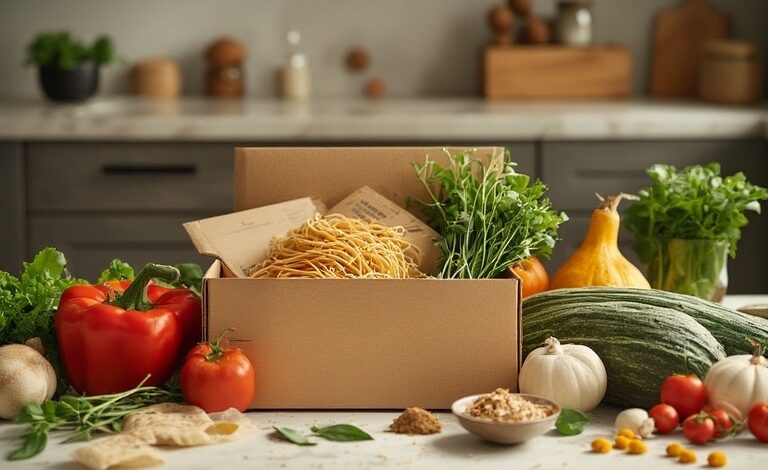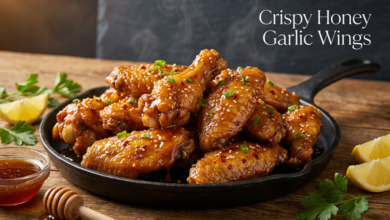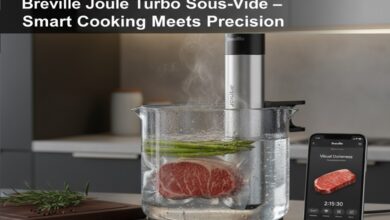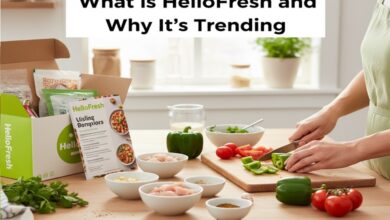DIY Food & Recipe Kits: The Future of At-Home Dining

Cooking at home has never been more exciting—and convenient—thanks to DIY food and recipe kits. These kits deliver fresh ingredients and step-by-step instructions straight to your door, making it easy for anyone to cook restaurant-style meals at home. In 2025, they’ve evolved from niche products into mainstream lifestyle solutions, catering to busy professionals, families, and even fitness enthusiasts. But are they worth it compared to traditional grocery shopping or dining out? Let’s break it down.
🌍 Why DIY Food Kits Are Trending
Several lifestyle shifts have pushed DIY food kits into the spotlight:
- Busy Schedules ⏱️: With work and family demands, people want quick, guided cooking solutions.
- Health Consciousness 🥗: More consumers want to control ingredients, calories, and nutrition.
- Restaurant Experience at Home 🍷: Kits provide gourmet-style meals without the high price of dining out.
- Sustainability 🌿: Many brands now use recyclable packaging and locally sourced ingredients.
This combination makes recipe kits not just about food—but about convenience, wellness, and lifestyle appeal.
⚖️ DIY Kits vs. Grocery Shopping & Dining Out
When comparing DIY kits to traditional cooking and eating out, the advantages stand out:
- Grocery Shopping: While groceries offer flexibility, DIY kits save time on meal planning and reduce food waste by providing pre-portioned ingredients.
- Dining Out: Restaurants deliver instant gratification, but kits bring a similar experience at home for a fraction of the cost.
- Takeout/Delivery: Takeout is convenient but often unhealthy and expensive, whereas DIY kits balance health, taste, and affordability.
This balance explains why DIY kits are considered the “middle ground” between convenience and quality.
💪 Health & Nutrition Benefits
One of the strongest selling points of DIY kits is their emphasis on nutrition and customization. Many providers now offer plans tailored to:
- Weight management ⚖️
- High-protein fitness diets 💪
- Plant-based and vegan lifestyles 🌱
- Allergy-friendly meals (gluten-free, dairy-free, nut-free) 🚫
Unlike random recipes online, these kits are crafted by chefs and dietitians, ensuring flavor and health go hand in hand.
🍲 User Experience: Cooking Made Fun
DIY kits turn cooking into an interactive, enjoyable experience. Even beginners can create impressive dishes thanks to step-by-step recipe cards or app-guided instructions.
Highlights of the experience include:
- Pre-measured ingredients that save time and reduce waste.
- Easy-to-follow instructions with visuals.
- Opportunities to discover new cuisines and flavors without leaving home.
This gamified cooking experience appeals to both families with kids (fun activity) and millennials who love trying trendy dishes.
🛒 Popular Products & Subscriptions
The DIY food kit market is booming, with brands offering different strengths:
- HelloFresh 🥗: Known for variety and easy-to-cook meals, perfect for families.
- Blue Apron 🍝: Focuses on chef-designed, gourmet-style dishes.
- Green Chef 🌱: Specializes in organic, plant-based, and keto-friendly options.
- Home Chef 🍳: Highly customizable kits that let you swap proteins and adapt recipes.
Beyond dinner kits, there are also niche subscriptions for desserts, smoothies, global cuisines, and even cocktail kits—proving how diverse this category has become.
🌟 Sustainability & Conscious Living
Modern consumers want more than convenience—they want eco-conscious solutions. Many DIY kit companies now:
- Use recyclable or compostable packaging.
- Source ingredients from local farms.
- Offer portion-controlled servings to reduce food waste.
This approach not only benefits the planet but also strengthens the brand’s emotional appeal among environmentally aware customers.
✅ Pros & ❌ Cons of DIY Food Kits
Pros:
- Convenient and time-saving
- Pre-portioned ingredients reduce waste
- Variety of cuisines and dietary options
- Fun, interactive cooking experience
- Encourages healthier eating habits
Cons:
- Higher cost than raw grocery shopping
- Requires cooking time (not instant like takeout)
- Subscription commitment may not suit everyone
🔮 The Future of DIY Food & Recipe Kits
Looking ahead, recipe kits will continue to evolve. Expect to see AI-driven meal personalization, where apps suggest kits based on your health goals, fitness tracker data, or even fridge inventory. Many companies are also exploring hybrid models, offering ready-to-eat meals alongside DIY kits for ultimate flexibility.
As more households embrace smart kitchens and connected appliances, DIY kits will integrate seamlessly, guiding users through voice assistants, apps, and interactive displays.
🍴 Final Verdict: Worth It or Not?
DIY food and recipe kits aren’t just a passing trend—they’re becoming a new standard for home cooking. By striking the balance between convenience, nutrition, and sustainability, they offer a lifestyle upgrade that goes beyond simple meal prep.
For those looking to save time, eat healthier, and enjoy cooking without the stress of planning, investing in a subscription like HelloFresh, Blue Apron, or Green Chef could transform your weekly routine.
In short, DIY kits turn the kitchen into a place of flavor, fun, and discovery—all while fitting perfectly into the fast-paced lifestyle of 2025.



